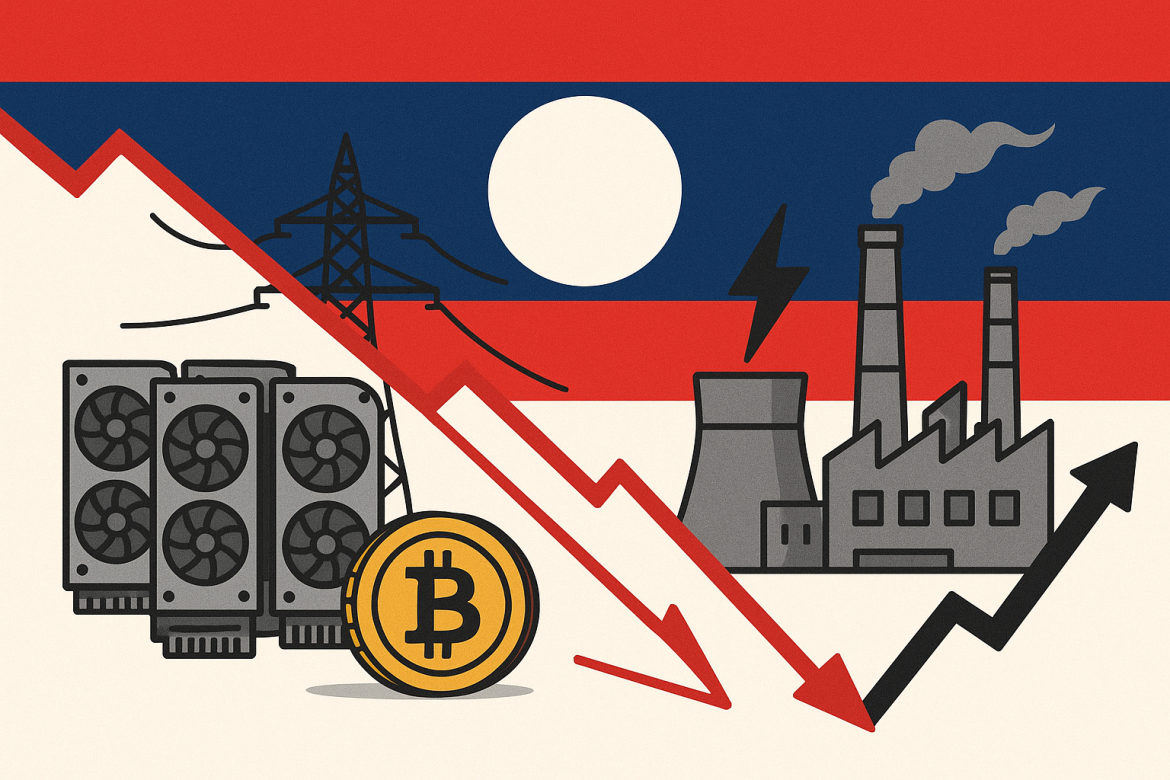Laos is preparing to disconnect cryptocurrency miners from its national grid by the first quarter of 2026, as per a Reuters report.
The government says the move will help redirect valuable electricity to sectors that contribute more directly to long-term economic growth, such as artificial intelligence data centres, metals refining, and electric vehicle manufacturing.
The decision marks a sharp turn in Laos’ energy policy, which once welcomed miners seeking cheap, renewable electricity.
But as energy demand from emerging industries rises, authorities are prioritising sectors that generate jobs, boost exports, and strengthen the domestic economy.
Laos rethinks energy priorities
Laos opened its doors to crypto mining in 2021, attracting operators with surplus hydropower and low tariffs.
The industry quickly expanded, consuming around 500 megawatts (MW) of electricity at its peak between 2021 and 2022.
But by this year, that figure had dropped to 150 MW, Deputy Energy Minister Chanthaboun Soukaloun told the news agency in an interview.
Soukaloun said the government initially approved power allocation to miners to absorb an oversupply of electricity.
However, as per the report, the ministry now believes that “crypto doesn’t create value” when compared to supplying industries with tangible outputs and employment opportunities.
The deputy minister confirmed that Laos had considered ending supply earlier in 2025 but continued operations temporarily due to heavy rainfall that boosted hydropower generation.
The surplus allowed increased exports to neighbouring Thailand and Vietnam while still supporting some mining operations.
Now, with demand from high-value industries accelerating, Laos aims to cut supply entirely by the end of the first quarter of 2026.
From crypto hub to regional power exporter
Known as the “battery of Southeast Asia,” Laos has built its economy around hydropower exports, which are crucial for neighbouring nations trying to decarbonise their energy mix.
Most of its electricity is sold to independent power producers in Thailand and Vietnam through cross-border deals.
The government plans to increase bilateral export capacity to Vietnam, which currently stands at about 8,000 MW.
Soukaloun said talks are also underway to resume exports to Singapore through the Lao-Thailand-Malaysia-Singapore (LTMS) power transmission corridor.
Exports through the corridor were suspended after Thailand delayed finalising an extension to the agreement, but officials from all four countries recently reaffirmed their commitment to strengthening multilateral power trade.
By reallocating power from crypto mining to regional grids and industrial users, Laos aims to consolidate its role in Asia’s clean energy transition and stabilise revenue from energy exports.
Legal and investment challenges
Even as it pivots to new opportunities, Laos faces a legal dispute with a Chinese energy company.
A unit of the state-owned Power Construction Corp of China has filed a $555 million arbitration claim against Laos’ state utility, Electricite du Laos (EDL), over unpaid dues linked to a $2.73 billion hydropower project.
Soukaloun confirmed that arbitration proceedings are underway, noting that the dispute stems from a mismatch between projected and actual power demand.
Despite these headwinds, Laos remains an attractive market for renewable energy investors.
The government is reportedly in discussions with Chinese firms to expand solar and wind capacity, further strengthening its reputation as a clean energy hub in the region.
The post Laos to end electricity supply to crypto miners by 2026 to power industrial growth appeared first on Invezz

